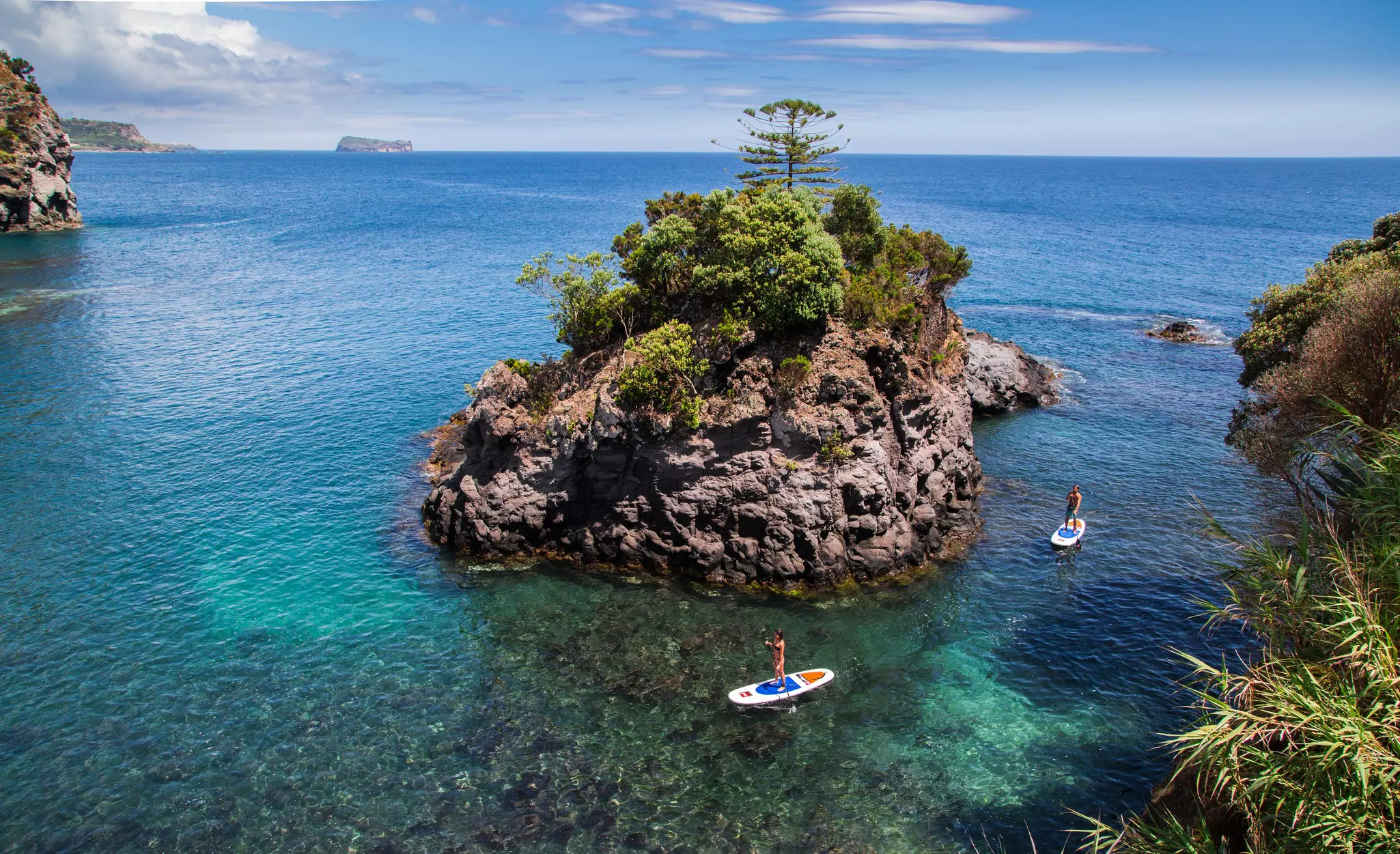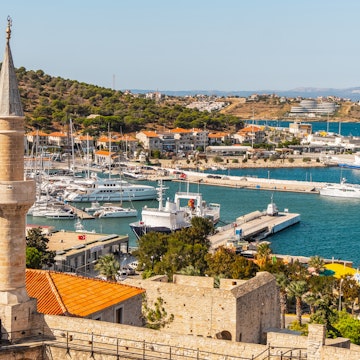

The Cascade in Yerevan, Armenia. Getty Images
There’s a lot to love about the small Caucasus republic of Armenia: travelers are drawn by its dramatic mountains, beautiful frescoed monasteries and over 6000 years of expertise in making wine. The country has also inherited a fine legacy of Soviet-era monuments scattered across the landscape from its 70 years as one of the 15 republics of the USSR. Here are some of Armenia's best Soviet heritage sites, from open-air sculpture galleries and stylized war memorials to mineral water dispensers and train stations.
The Cascade, Yerevan
The centerpiece of Yerevan is the Cascade Complex, a huge marble staircase that extends up the hill from the capital city's center into the northern suburbs. This grandiose project was proposed in the 1930s, with construction eventually beginning in 1971: it remains unfinished, with the staircase ending about three quarters of the way to the top. The completed sections are peppered with fountains, sculptures and greenery, perfectly complementing the soft orange stone. At the summit, you’ll find a marvelously stark concrete platform, on which stands an obelisk dating to the 1970s that celebrated 50 years of Soviet Armenia.
Detour: From the top of the Cascade, it’s a short wander to the statue of Mother Armenia. This immense figure of a woman watches over the city: erected in 1967, she replaced a statue of Stalin. Housed in the statue’s plinth is the military museum, which explores Armenia’s role in WWII.
Writers House, Sevan
Armenia has no coastline, but the vast Lake Sevan fills in as the country’s premier beach resort. Most visitors head to Sevanavank, which boasts a splendid medieval monastery alongside the beach cafés and water sports activities. Soviet heritage hunters, however, will be drawn by the Writers House, a fantastic brutalist building that looms out of the hillside, unsupported but for a solid pillar at one end. With smooth concrete curves and floor-to-ceiling windows, it was once used as a retreat for Soviet intelligentsia; it now operates as a café and B&B.

The Iron Fountain, Gyumri
In a rarely visited park in the north of the city of Gyumri stands one of the finest pieces of Soviet heritage in the country: the Iron Fountain. Built in the early 1980s, this rather avant-garde spiky beast once spouted jets of water, but has stood derelict since the fall of the USSR. Almost mesmerizingly ugly, it is often compared to a UFO descending to Earth, and is one of the most distinct Soviet structures you’ll see anywhere.
Shahumyan Museum, Stepanavan
What do you do when you need to preserve the house of a Bolshevik revolutionary for posterity, but you also want an unnecessarily large museum? The Soviet town planners in Stepanavan had the answer: you build the museum around the house. The result is a gigantic, orange cuboid structure sitting squatly in the center of Stepanavan, with the home of Stepan Shahumyan entombed within it. Although the house is the centerpiece of the museum, there’s a curious collection of other artifacts to see here, with portraits of Lenin jostling for space beside archaeological treasures from the region and 1980s newspaper clippings. Although the USSR is now long gone, the museum acts as an interesting demonstration of the almost hagiographic regard in which the early Bolsheviks are still held.
Detour: Just outside Stepanavan is one of Armenia’s finest medieval fortresses, Lori Berd. The ruins of this castle span a large area beside an impressive gorge, and they are particularly attractive in spring when the site is carpeted with wildflowers.
Vanadzor train station
The railway station of Armenia’s third city, Vanadzor, is worth a special trip for Soviet legacy enthusiasts. Inside, on the wall to the right of the entrance, is an enormous map dating back to the days of the USSR, showing the entire Soviet rail network in beautifully blocky style with Cyrillic labeling and stars marking the capitals of the various Soviet republics. Sit back on the (appropriately hard) wooden benches, gaze at the map, and dream of the days you could ride the rails from Tallinn to Vladivostok.
The Turkish border
Back in the Soviet era, Armenia’s western frontier with Türkiye formed the border between the USSR and NATO, and was thus heavily fortified: the remains of Soviet border posts can still be seen along the frontier today. The best example is close to the village of Anipemza, where a lone concrete post bears a rusting hammer and sickle, a forlorn reminder of the Iron Curtain.
Detour: In Anipemza village, you’ll find a relic from a much earlier time: the huge orange stone basilica of Yereruyk, which dates from the fifth century, making it one of Armenia’s oldest surviving churches.
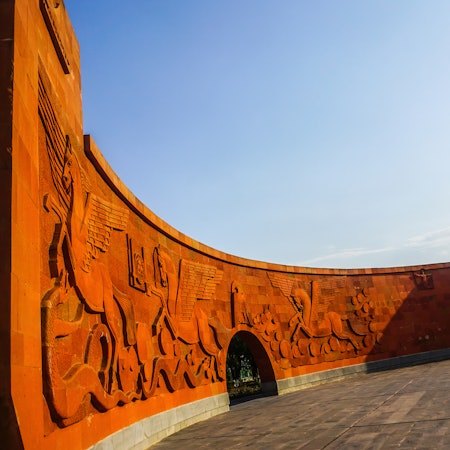
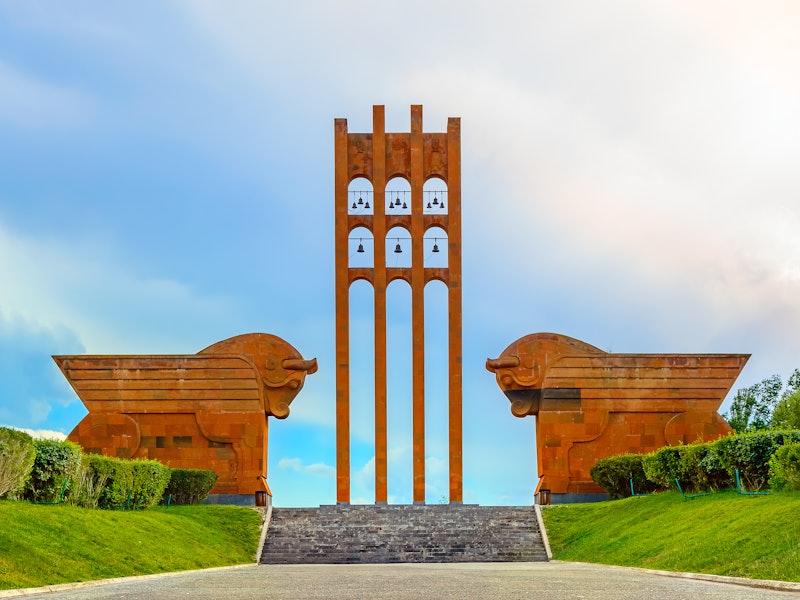
Sardarapat Memorial, Araks
Between the end of WWI and the Soviet occupation in 1920, Armenia enjoyed a brief spell of independence. Still reeling from the events of the Armenian Genocide and struggling with statehood, this was a tumultuous and difficult time for the nation – which made its victory over an invading Turkish force at the Battle of Sardarapat all the more remarkable. The victory is commemorated at the Sardarapat Memorial, built in the 1960s in a style that blends socialist-realism and medieval Armenian. Most immediately eye-catching are the huge pair of orange stone bulls that flank the entranceway, beyond which is an enormous bas relief telling a symbolic version of the history of the battle.
Planning tip: Sardarapat Memorial is a challenge to reach by public transport; you’re better off hiring a car or taking a taxi. Remember that Sardarapat Memorial is not in Sardarapat village – it is in Araks, 7km to the south.
Mineral Water Gallery, Jermuk
Armenia’s spa town, Jermuk, was a favored holiday destination in the Soviet era, with tourists from all over the USSR coming to enjoy spa treatments in this mountain resort. The mineral water bubbling up from beneath the ground is sold across the country but visitors to the town can sample the water for free. This is thanks to the marvelous Mineral Water Gallery, a mid-twentieth century construction taking inspiration from Greco-Roman architecture but given an unmistakable blocky Soviet spin. Walk the colonnaded gallery and fill up your bottle with the warm, fizzy, salty water dispensed from the taps.
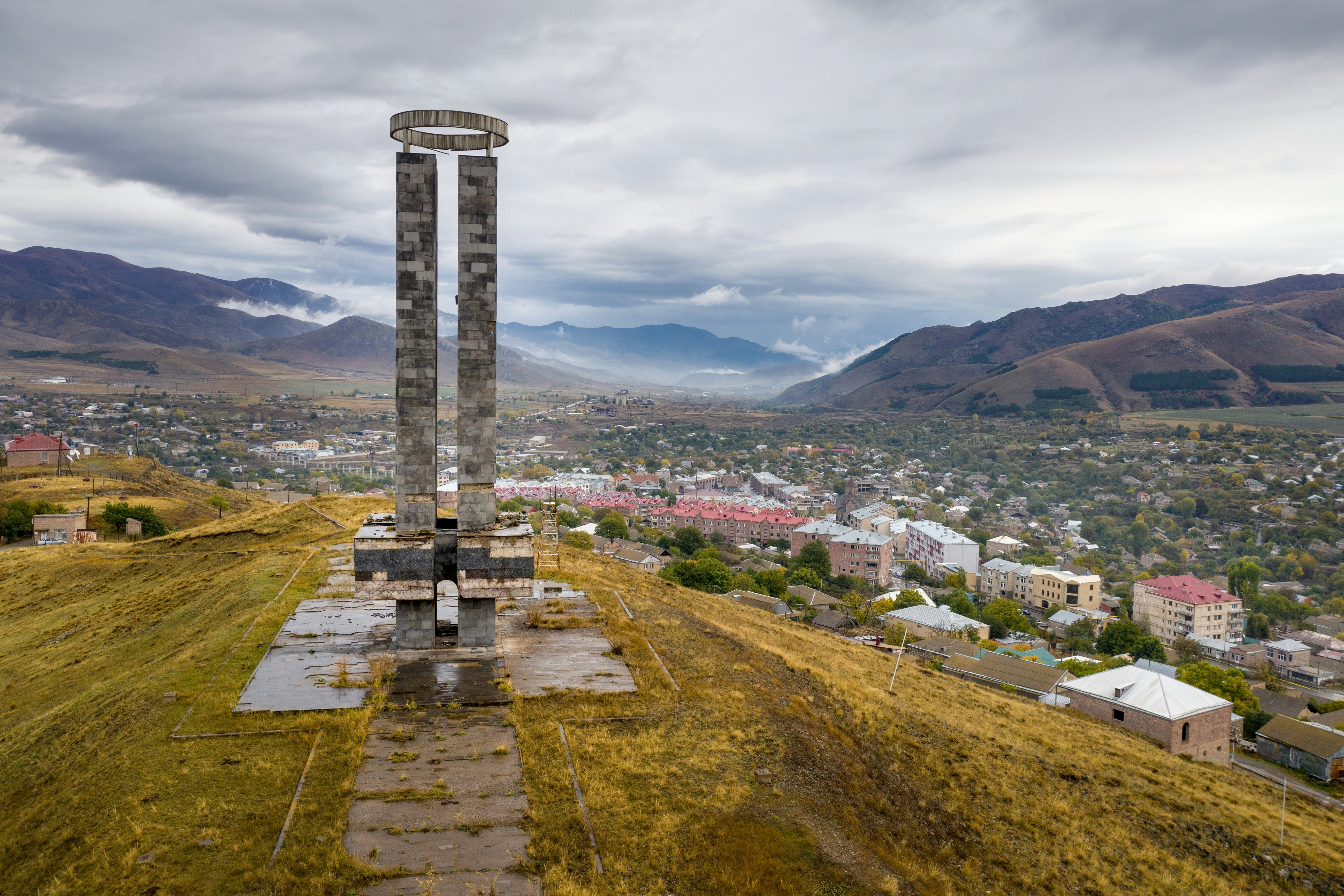
Earthquake Memorial, Spitak
Tragedy struck Armenia in 1988, when a powerful earthquake struck the country’s northwest, centering on the town of Spitak. Countless lives were lost, and despite an international aid effort, the Soviet authorities were slow to respond adequately. Even today, Spitak is still struggling to recover, and the memorial erected by the Soviets – at the top of a hill overlooking town – is neglected. It’s a simple structure of two immense concrete obelisks topped by a circular crown, sitting forlornly on an overgrown platform; it is a perfect example of a spartan Soviet monument from an era when the USSR was in steady decline.
Detour: In the hills around Spitak lie the remains of a Young Pioneer camp. This Soviet equivalent of a Scout camp is now abandoned, but numerous structures – including the swimming pool decorated with marvelous mosaics – still survive and can be visited by intrepid explorers.


